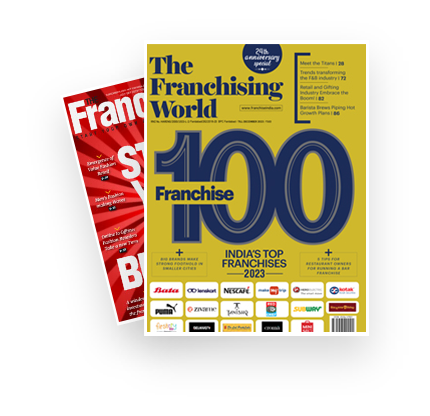
No doubt, franchising is the best way to expand business. .Say for example, it not only makes the brand name famous but also provides continuous earnings to the franchisor. On the other hand, franchisee gets a proven and an established business model. Franchisees can take the franchise in lieu of the franchise fee and recurrent royalty to the franchisor. Royalty is paid by the franchisee for the use of the franchisor's proven system, support system and brand recognition. But mostly the concept of franchise royalty is considered negatively both by the existing franchisees and the aspiring franchisees. But there can be many benefits of royalty for the franchisees. Listed below are few benefits of franchise royalty.
Benefits for the franchisee
A small per cent of the profits earned by the franchisee is shared with the franchisor in form of royalty.
- Boon out of a bane - Royalty fee can be considered as a monthly investment in the business.
- Enjoys continuous assistance and support -By paying royalty regularly, the franchisee enjoys assistance and guidance from the franchisor. This support system includes on going training to the staff, assistance in advertising and marketing of the brand at local level. The franchisee enjoys all these leverages by paying minor allowances to the franchisor.
- Upgraded franchise system - Royalty payments are paid so that the franchisor updates his franchisee with the latest products and services.These latest techniques assist the franchisees to make more profits.
- Consumers’ being the actual players - Royalty fee is not paid from the franchisee’s pocket rather, it comes from the consumers facilitated from the franchisor’s brand. Therefore the franchisees must not have any problem in sharing the profits with the franchisor.
Royalty Structures
Royalty structures in franchising may vary time to time. As some franchisees may feel more comfortable paying the royalties monthly, while others may prefer to pay annually or quarterly.
Royalty payments may start from three per cent and can rise up to 10 per cent. All these details have to be discussed prior to signing the franchise agreement. Besides, at the time of payment of royalties, the mode of payment must be discussed. It includes:
Percentage of gross sales: It is one of the most common modes of payment. Gross sale is the total profit earned, including discounts offered to the customers, allowances etc. The franchisee pays a small per cent of the gross sales to the franchisor.
Percentage of net sales: In this type of payment, the percentage paid to the franchisor may rise as the net sales are the profits after deducting the, discounts for the customers, allowances etc.
Despite the advantages of franchise royalty, one of the limitations that the franchisees can meet is that the royalty fee is not negotiable. It is the franchisor who decides the amount of royalty fees. To conclude it can be said that the franchise royalty fee is considered a burden on the franchisee but on the other side, the franchisee’s success wholly depends on the ‘brand name’. Thus, paying a small amount should hardly matter in order to gain the profits and success of franchise business.

